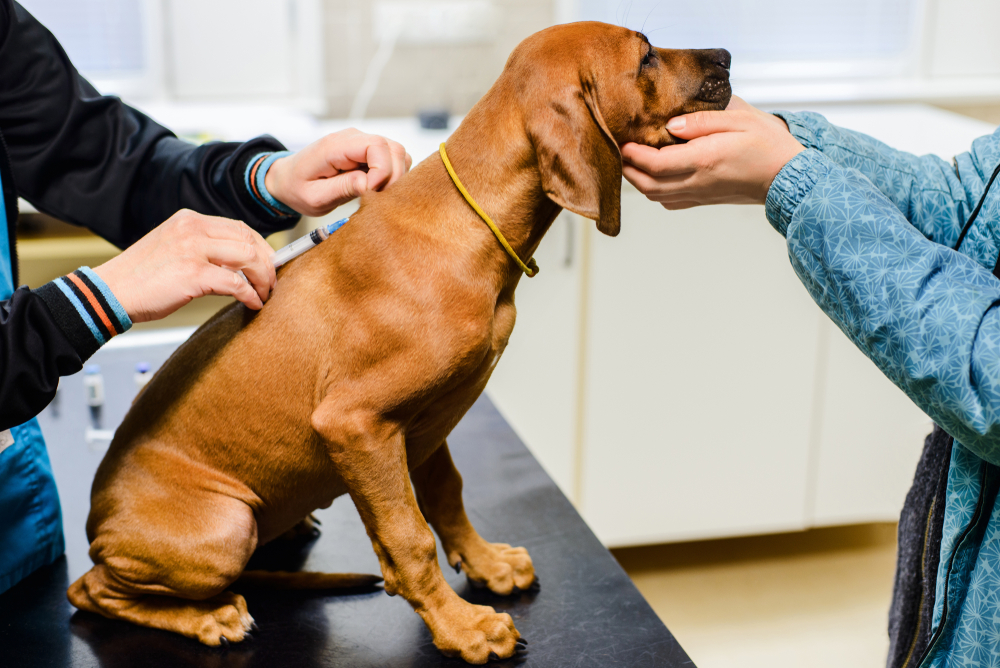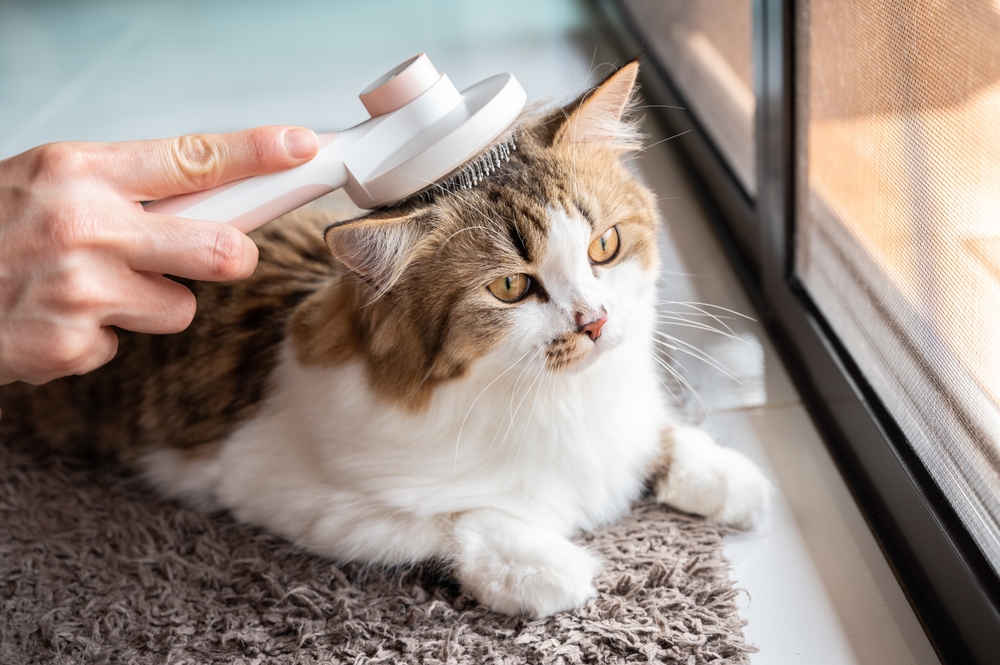Have you ever heard of proactive pet care?
The term you need to remember from now on is “proactive pet care.” This is not a new philosophy, but until now it hasn’t been that popular. But you know, times are changing, and with them the way people interact with the world around them.
Having a pet is somehow similar to having a baby; you need to take care of them, and the safest approach is proactive pet care. In the same way, early prevention is possible for humans; it is also possible for pets, and studies show that this is how you keep your fluffy companions happy and healthy for a longer time.
Rather than waiting for illness or injury to manifest, this approach centers on actively maintaining a pet’s well-being to preemptively address potential health concerns. Embracing a proactive pet care philosophy is the next step you should take if you want your pet to be healthy. Besides this, there are also some financial benefits that you can take advantage of because taking care of your pet constantly is much cheaper than emergency vet visits.
So, learn how to avoid a crisis and get ready to discover all you need to know about proactive pet care!
Regular veterinary visits
First and foremost, regular veterinary checkups are the most important part of this new routine that focuses on prevention. You are not the one who decides if your pet is clinically healthy. The vet is the only one capable of doing so, and as a result, regular vet visits are a must.
This is the cornerstone of proactive pet care, and these routine appointments should never be overlooked. During these visits, vets are able to notice the subtle signs that can indicate illness or make various recommendations. Developing cancers, early-stage organ dysfunction, or parasitic infestations can be identified; all can be identified during a regular vet checkup. They are not easy to spot if you are not a professional, so even if you believe you are the most observant pet parent, you still need to be careful.
Wellness examinations are specifically designed to thoroughly assess a pet’s current health, detect any underlying conditions before they become severe and costly to manage, and provide tailored recommendations for ongoing preventive care. Think of them like the annual physical for humans. Would you skip that?
Puppies and kittens: If your pet is under one year of age, monthly veterinary visits are typically recommended. This is an intensive period for them, and noticing any changes is crucial. Also, this is the time when vets administer multiple rounds of vaccinations, which are essential to protect young animals against common infectious diseases during their most vulnerable stage.
Adult dogs and cats (1-7 years): For healthy, active adult pets within this age range, annual wellness examinations are generally recommended. These are yearly basic check-ups that are meant to monitor the pet and are essential if you want to follow proactive pet care. Even when the pet appears to be in perfect health, you still should do them!
Senior dogs and cats (8 years and older): As pets advance in age, their physiological needs change, and they become prone to age-related conditions such as arthritis, organ dysfunction, and certain cancers. So, semi-annual (every 6 months) wellness examinations are strongly advised for senior pets.
Besides age, there are also some specific factors that guide you in terms of how often your pet should visit the vet. Certain breeds, for instance, are genetically predisposed to specific health conditions, which may necessitate more frequent check-ups to monitor for early signs of these issues.
To maximize the effectiveness of a veterinary visit, remember that preparation is key. If a pet has received veterinary care elsewhere, it is a good idea to bring their complete health records or arrange for them to be forwarded to the current clinic.

Vaccinations
Proactive pet care can’t be achieved without vaccination. This is how you strategically prepare a pet’s immune system to effectively combat specific infectious diseases.
The way vaccines work is simple. They introduce antigens into the body, components that mimic the disease-causing organism but are inactivated, ensuring they do not cause actual illness. These antigens mildly stimulate the immune system, and the body reacts by producing specialized memory cells and antibodies. This trains the immune system, and when it needs to battle the real disease, it will be more prepared.
Vaccines are systematically categorized into “core” and “non-core” classifications, based on their universal necessity and the specific risk profile of the disease they target.
Core vaccines for dogs: protection against canine distemper, canine parvovirus, canine adenovirus (which causes infectious hepatitis), and rabies. Some sources also include vaccines like kennel cough, Lyme disease, leptospirosis, and canine influenza as core. These are generally recognized more as non-core, and you can decide if they are needed based on circumstances.
Core vaccines for cats: feline panleukopenia (also known as feline parvovirus), feline calicivirus, feline herpesvirus-1, and rabies. Feline Leukemia Virus (FeLV) vaccine is considered core for kittens due to their high vulnerability to the virus.
Vaccination schedules are meticulously designed to provide total protection, particularly during the vulnerable early months of a pet’s life. For example, puppies and kittens receive a series of vaccinations, administered usually 2-4 weeks apart, with the final dose in the series given around four months of age. This scheme is essential in proactive pet care, and it should be followed exactly as the vet prescribes it.
This multi-dose approach is essential because varying levels of maternal antibodies (MDA), passed from the mother to her offspring, can interfere with the effectiveness of early vaccine doses.
After the pet has reached adult age, core vaccines should be administered no more than once every three years. This recommendation comes from research that indicates that the duration of immunity (DOI) for many core vaccines is extensive, often lasting for many years, and potentially even for the lifetime of the pet.
Illness prevention
This is an extensive topic, but one important thing that many pet owners simply ignore is the weight of their pet. If you want to start proactive pet care, you should immediately think about what your friend eats and how much they eat. Humans are not the only species that can suffer from obesity and its side effects. Pets can suffer from it too, and it impacts their lives in terrible ways, many times reducing their lifespan.
Hypertension, diabetes, and bladder stones are just a few of the risks that obese and overweight pets are more prone to. They also frequently experience reduced activity levels, diminished mobility, and a generally lower quality of life. Some studies found that mentioning an ideal weight and body condition score (BCS) in dogs greatly improves their quality of life.
Just like you would do for yourself, understanding the caloric needs of your pet is how you start to walk on the road of healthy nutrition. A pet’s maintenance energy requirements (MER) are highly individualized and are based on many, many factors such as age, gender, neuter status, lifestyle, and individual metabolism. The general guidelines recommend around 180-200 calories/day for a 10 lb. cat and, for a dog of the same weight, 200-275 calories/day.
Sometimes, weight loss is mandatory for a better life for your pet, and this is when you should talk with the vet and find a strategy that works. Implementing healthy feeding is critical, and the easiest way to achieve that is by reducing the quantity of a pet’s current maintenance food.
One important thing about weight loss strategies is that the gradual and controlled approach is the best. A slow, steady weight loss of 1-2% of body weight per week for dogs and 0.5% up to 1-2% per week for cats is the most effective and healthy way to do things. Why? The gradual reduction leads to conservation of lean body mass while preventing rebound weight gain.
Another critical aspect you should not ignore is that fast weight loss should always be avoided for cats because it can lead to hepatic lipidosis, a severe and potentially fatal liver condition. This is also why veterinary guidance is a must. Things need to be done as safely as possible. For cats, the recommended strategy is to feed approximately 80% of their Resting Energy Requirement (RER) based on their target weight.
Regular physical activity and mental stimulation are also essential for weight loss and well-being, and this is exactly why proactive pet care focuses on them.
Outdoor activities such as walking and hiking are perfect for pups as they provide both physical exertion and opportunities for exploration and sensory enrichment. Then, swimming is a non-impact cardiovascular exercise that is best for older dogs because it does not affect their joints.
On the other hand, cats tend to live exclusively indoors, but this doesn’t mean they don’t need exercise. Cats might seem incredibly independent, but they need us to play with them and to spend time with them in general.
Using a cat wand with a dangling toy effectively mimics their natural hunting behavior, and this encourages jumping and running around. Exactly what they need to stay fit and healthy. Lasers are a good source of endless entertainment, but you should be careful to never shine the laser in their eyes.
It is critically important to always remove toys with string or yarn when not actively playing with a cat, as ingestion of such items can lead to dangerous and potentially fatal intestinal foreign bodies requiring surgical intervention.

Dental care
Proactive pet care can’t be complete if we don’t mention dental care. We take care of our thighs, but how about the teeth of our pets? Who takes care of them? The answer is we, as pet owners. Dental care should never be ignored because neglecting a pet’s oral hygiene can lead to significant pain and a cascade of systemic health problems.
Some common dental issues include periodontal disease, cavities, broken teeth, painful abscesses, and widespread infections. Dental infections are no joke, as infections can easily spread to the brain!
The most effective measure a pet owner can take to protect the pet’s dental health is at-home dental care. Consistent home care can even reduce the frequency or potentially eliminate the need for periodic professional dental cleanings.
Now, you don’t have to brush their teeth daily, but doing it a couple of times per week is the standard recommendation. Most dogs can be gradually trained to accept tooth brushing, while cats may require more patience and a slower, more gradual training approach.
Selecting the right products is also essential. Try to find the products that have earned the Veterinary Oral Health Council (VOHC) Seal of Acceptance. On their website, they have an updated list of over 70 dog and 20 cat products that have been scientifically proven to reduce plaque and/or tartar accumulation.
Another thing that might help is providing your pet with dental-friendly treats and toys specifically designed to clean teeth and massage gums. This is another aspect of proactive pet care that people don’t talk too much about.
If you want to offer them dental toys, be careful and avoid hard items such as deer antlers, bones of any type, dried yak milk, and nylon toys. Why? These types of toys are known to cause painful tooth fractures. Maybe they are not a common occurrence, but vets know very well they can happen and advise you to be more careful when selecting the toys.
Some pets are more resistant than others when it comes to dental cleaning, but this doesn’t mean proactive pet care is not for them. There are other methods that might make things easier, such as dental gels, sprays, and wipes. These methods don’t include brushing and might be more accepted by these pets.
Professional dental cleanings are the ones performed at the vet, and sometimes they are truly needed. The procedure is almost exactly the same as the one used in human dental clinics and includes scaling to meticulously remove dental plaque and tartar from the tooth surfaces and below the gumline. But, unlike human cleanings, veterinary dental procedures necessitate the use of general anesthesia.
Anesthesia is essential because there are a couple of important aspects, such as ensuring the pet’s safety and comfort, allowing for a thorough examination of the entire oral cavity, and enabling effective cleaning below the gumline.

Regular grooming
Maybe you were not expecting to see this on the list of proactive pet care practices, but here it is. Regular grooming, whether performed at home by the owner or by a professional groomer, is a practice that should exist in the life of any pet. Grooming brings a lot of benefits to the table, and most of them are more than just aesthetic.
For example, grooming is known to significantly improve skin health by effectively removing loose fur, accumulated dirt, and debris, which in turn helps prevent skin infections and irritations.
No matter if you have a dog or a cat, regular brushing should be a part of your routine. First and foremost, brushing reduces excessive shedding and prevents the formation of uncomfortable mats in the coat. Furthermore, for cats, they will ingest less hair, so they will have fewer hairball problems.
Cats are naturally good at grooming themselves, so their owners don’t have to help them as much as they do dogs. Long-haired cat breeds, on the other hand, need to be brushed every day to keep their hair from getting tangled and matted. Short-haired cats, on the other hand, only need to be brushed once a week.
Dogs typically necessitate more frequent grooming than cats, but it all depends on the length of the fur. Short-haired dogs need to be brushed once per week, as this helps distribute the natural oils on the fur. Bathing is recommended only if the fur has an unusual odor. Too much bathing can lead to dry skin.
Medium/long-haired & double-coated dogs should be brushed daily in order to keep their fur loose, prevent knots and matting, and effectively manage shedding, especially during seasonal shedding periods. Bathing is also necessary more often, every 4-8 weeks, and don’t forget about professional haircuts every 10-12 weeks.
Do you want to brush your pet more often? This brush is an amazing addition: Hertzko Dog Brush for Shedding – Self-Cleaning Slicker Brush for Dogs and Cats
If you found this useful, you might also like this: Your First Pet: The Ultimate Puppy & Kitten Adoption Guide












